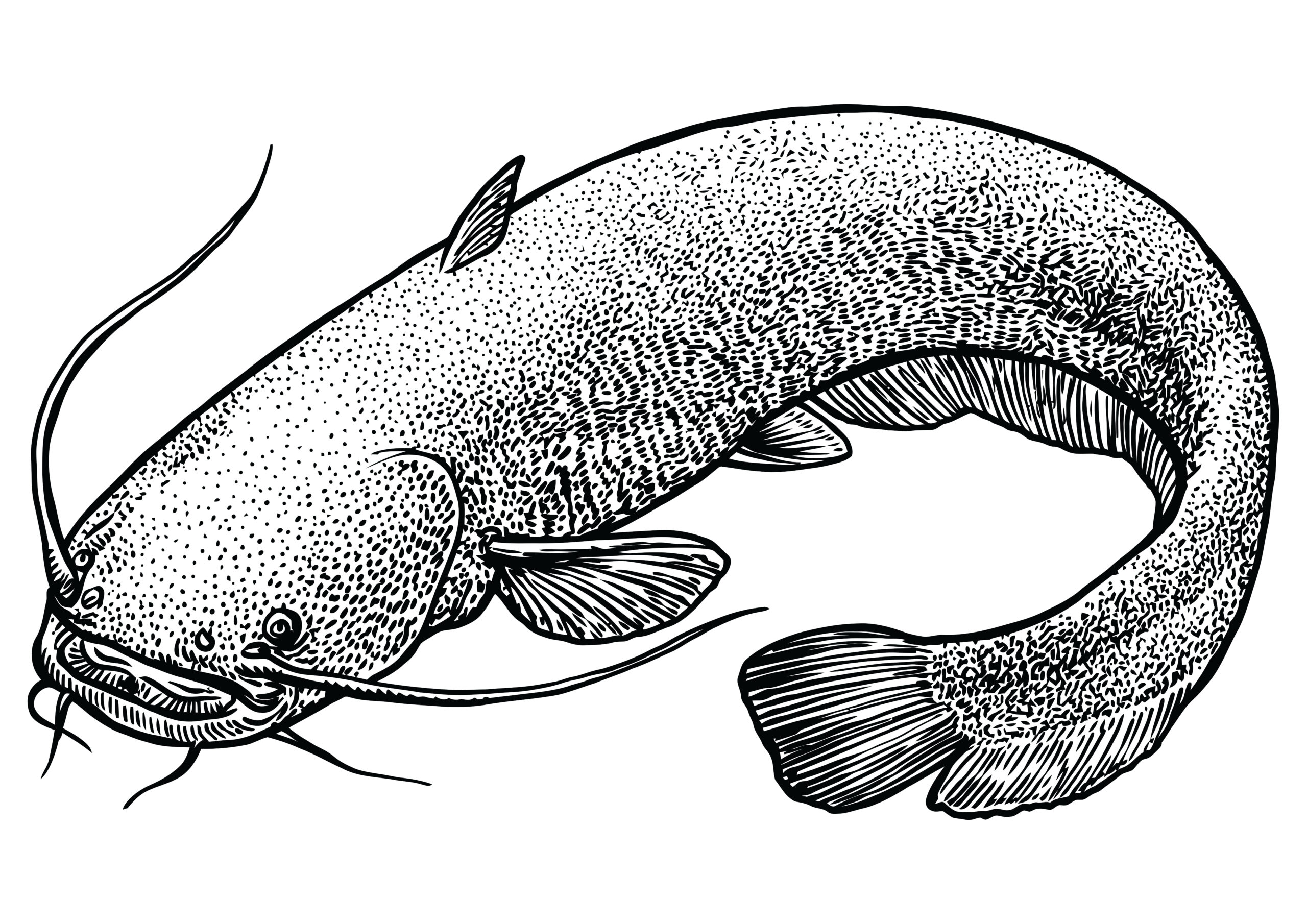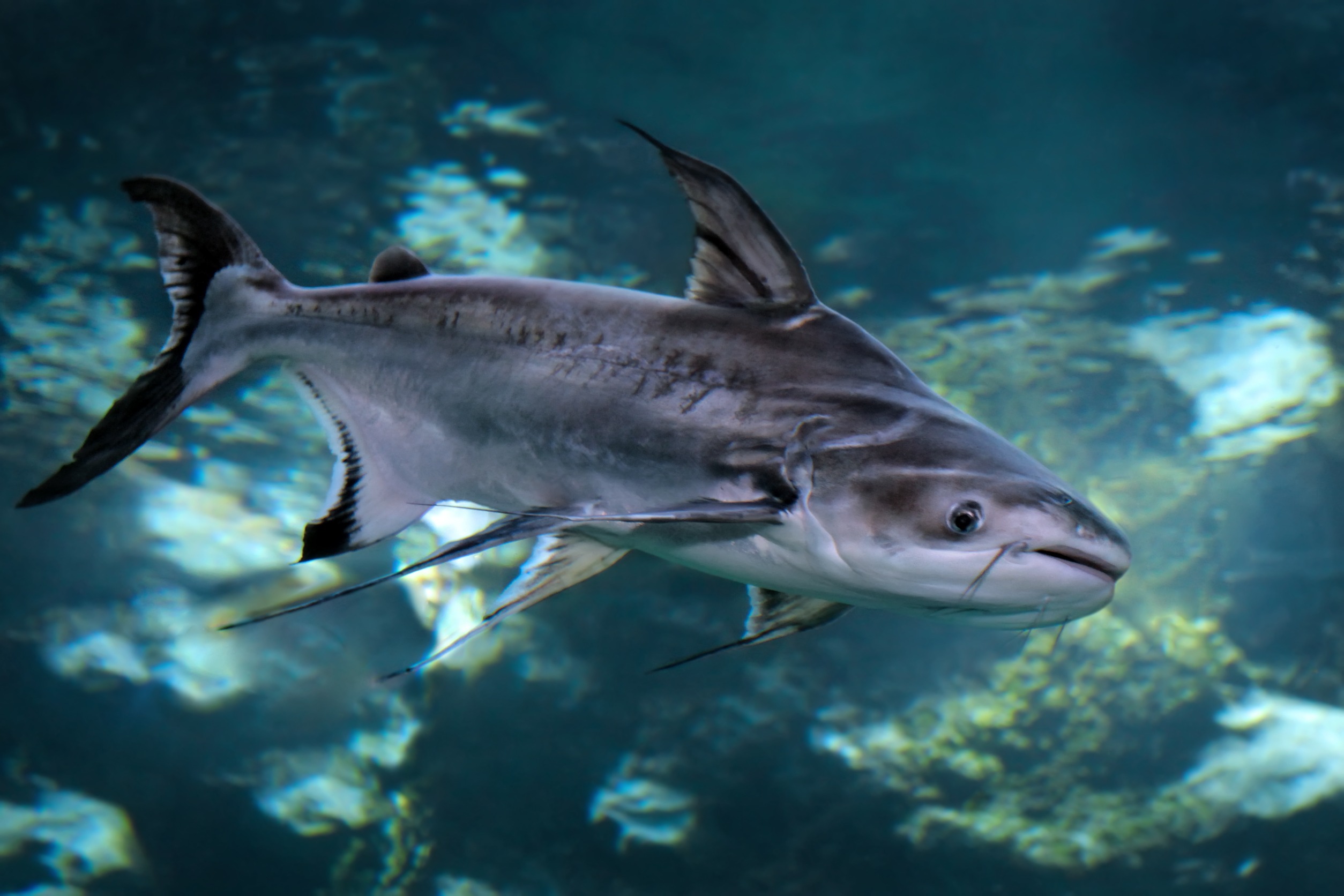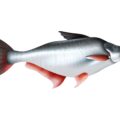The most significant difference between Catfish and Swai is their appearance and characteristics. Catfish and Swai are both popular seafood options, but they differ in a few aspects. Catfish is a broad term that surrounds various species found in freshwater environments. On the other hand, Swai is a distinctive type of catfish native to Southeast Asia with massive popularity for its unpretentious taste.
The primary individuality lies in their taste and texture. Swai has a milder and sweeter flavor than most catfish varieties, which tend to have an earthy taste. Swai have a softer, flakier texture, making them a perfect option for those who like to have a gentler seafood experience.

Difference Between a Catfish and Swai
One thing which is mentionable here is that catfish belong to a large family, and we can find hundreds of species of catfish. However, when it comes to Swai, there are a few types. Also, Swai is called different names like; tra, striped pangasius, cream dory, and iridescent shark.
These are the fundamental differential things between a catfish and a swai.
The Appearance
Both the catfish and Swai are pretty unique fish. Of course, both catfish and Swai are not similar in appearance, and both have some specific signatures.
Catfish
The catfish, with its unique appearance, exhibits fascinating features. The most mentionable characteristic of a catfish is its barbels, slender whisker-like appendages surrounding its mouth. These barbels play a vital role in locating prey, as they are equipped with sensitive taste buds, enabling the catfish to find food even in murky waters. The thought most people have when thinking about a catfish in the United States of America is a channel catfish with distinctive whiskers.
Catfish come in various patterns and colors, ranging from shades of brown, green, and gray, helping them blend into their surroundings as adept predators. They have eyes on the sides of their heads, allowing them to have a wide-angle view and spot predators or prey from various angles. The tergal and pectoral fins have sharp spines, acting as defensive weapons against potential threats.
In essence, the appearance of catfish is a unique adaptation to their underwater habitats, ensuring their survival and success as predators in many aquatic environments.
Swai
Swai is a freshwater fish renowned for its unique physical attributes. They are mainly native to Southeast Asia. This fish has a smooth, streamlined shape, facilitating effortless gliding through the water. The absence of scales helps its smooth, glistening skin, which exhibits a delicate, silver-white hue, smoldering under the play of light on the water’s surface.
With its plain, slightly flattened head, and expressive, large eyes, Swai possesses an adorable charm. Its tiny, sharp teeth are perfectly adapted for consuming small aquatic kinds of stuff beneath its body. The presence of pectoral fins helps in swimming and maintaining a proper balance.
Despite lacking vibrant colors or vibrant colors, Swai fascinates with its simple elegance and grace. Such a kind of beauty has made it a sought-after species in aquaculture and culinary pursuits around the globe.
The Habitat
Catfish and Swai aren’t particularly fussy eaters, but we can catch catfish frequently, while Swai is normally farm-raised for commercial purposes.
Catfish
The catfish, a fascinating aquatic creature, thrives in a diverse range of habitats across the globe. These adaptable fish can be found in various freshwater environments, from slow-moving rivers and lakes to swamps and muddy ponds. Their distribution spans North and South America, Europe, Africa, and Asia, showcasing their ability to adapt to diverse conditions.
Catfish are well-suited to their habitats due to their unique physiological features. Their barbels, or whisker-like sensory organs, help them navigate low-light conditions and find food on the murky bottom. The muddy substrates often found in their habitats provide ample shelter and breeding grounds, allowing them to lay eggs and protect their young.
Swai
The Swai is a freshwater catfish native to the Mekong River basin in Southeast Asia. Warm, slow-moving waters with abundant vegetation and submerged structures characterize the natural habitat of Swai. These fish prefer tropical climates and can be found in rivers, lakes, and flooded fields.
In their natural environment, Swai thrives in water temperatures ranging from 25 to 30 degrees Celsius (77 to 86 degrees Fahrenheit). Dense aquatic vegetation provides them shelter and protection from predators, while submerged structures like fallen trees or rocks offer additional hiding spots. Swai are omnivorous and feed on various aquatic plants, insects, crustaceans, and small fish.
The Size
Though catfish and Swai are similar in size, there is a little difference.
Catfish
The size of a catfish can vary widely depending on the species and its environment. On average, catfish can range from a few inches to several feet in length. Some smaller species, like the famous channel catfish, might measure around 12 to 24 inches, while larger species, such as the Mekong giant catfish, can reach lengths exceeding 10 feet and weigh hundreds of pounds.
Catfish possess a distinctive appearance with their long, barb-like whiskers called “whisker pads” or barbels, aiding their sensory perception. These barbels and their robust bodies contribute to their efficiency as formidable predators.
Swai
Swai is a type of freshwater catfish found in Southeast Asia. In terms of size, Swai can grow quite large, making them a substantial fish species. On average, adult swai can reach lengths of up to 3 to 4 feet and weigh between 40 to 60 pounds (18 to 27 kilograms). However, some individuals have been known to exceed these measurements.
Their substantial size contributes to their popularity in the culinary world, as they provide sizeable fillets that are mild and tender, making them ideal for a wide variety of dishes. The taste of Swai is often compared to other whitefish, such as tilapia. Due to their impressive size and versatility in cooking, Swai has become an increasingly sought-after fish in many parts of the world.
The Diet
Catfish and Swai have very different and individual diets because of their different characteristics.
Catfish
The diet of catfish is remarkably diverse, reflecting their adaptability to various aquatic environments. As omnivorous bottom-feeders, they display opportunistic feeding behavior. Their primary diet comprises tiny marine organisms like crustaceans, insects, and mollusks. Being scavengers, they also feed on decaying plant matter and detritus, helping to clean up their habitat.
Young catfish prefer a more carnivorous diet, mainly consuming smaller prey such as tiny fish and insect larvae. As they grow, their diet expands to include a broader range of food sources. Larger catfish consume larger fish, frogs, and even small mammals near the water’s edge.
Swai
The diet of a Swai is primarily carnivorous, with a preference for tiny aquatic organisms. Swai is freshwater catfish native to Southeast Asia and is commonly farmed for their mild-flavored, white flesh. In the wild, they consume a variety of food sources, such as algae, insects, crustaceans, and smaller fish.
When reared in aquaculture settings, their diet is carefully managed to ensure optimal growth and quality of meat. Commercially raised Swai are fed a formulated diet of fishmeal, fish oil, and plant-based ingredients. This balanced diet provides essential nutrients like proteins, fats, and vitamins necessary for their growth and well-being.

The Reproduction Method
The reproduction method of catfish and Swai is similar in a few ways, but it also has some differences.
Catfish
The catfish, a diverse group of freshwater fish, utilizes an interesting reproduction method known as external fertilization. During the spawning season, which is often triggered by changes in water temperature and other environmental factors, female catfish release their eggs into the water. These eggs are typically adhesive and stick to rocks, vegetation, or other submerged objects.
Once the eggs are released, male catfish actively fertilize them by discharging their sperm directly onto the eggs. This external fertilization process ensures that the eggs receive sufficient sperm for fertilization to take place successfully.
After fertilization, the catfish eggs are left to develop and hatch on their own, and the parents usually do not provide any parental care. The newly hatched catfish fry are highly vulnerable at this stage and must find shelter and food in their natural habitat to survive and grow.
Swai
The reproductive method of Swai involves external fertilization, a typical process among many fish species. During the breeding season, which typically occurs during the rainy season, male and female Swai gather in shallow waters or flooded areas.
The female releases thousands of tiny eggs into the water, while the male simultaneously releases a cloud of sperm. The eggs are then fertilized externally as the sperm comes into contact with them. Once fertilized, the eggs drift with the water current, seeking suitable locations for attachment, such as vegetation or submerged objects.
Depending on water temperature and environmental conditions, the hatching process takes a few days.
The nutritional Composition
Both catfish and Swai are popular for tier taste and nutritious value. There are a large number of people around the globe who take them to get nutrition.
Catfish
Catfish is a highly nutritious freshwater fish with a rich nutritional composition. It is an excellent source of high-quality protein for muscle development and repair in cats and humans alike. A 3.5-ounce serving of catfish typically provides around 20-25 grams of protein, making it an excellent choice for a protein-rich diet.
In addition to protein, catfish also contains healthy fats, including omega-3 and omega-6 fatty acids. These fats are vital for maintaining heart health, promoting a shiny coat in cats, and supporting overall well-being. Moreover, catfish is a good source of vitamins and minerals, such as vitamin B12, selenium, and phosphorus, which contribute to energy production, immune function, and bone health.
Swai
From a nutritional perspective, Swai is considered a low-calorie and lean fish option. A 3.5-ounce (100-gram) serving of Swai typically provides around 90 calories, making it a suitable choice for those looking to manage their calorie intake.
Swai is a good source of high-quality protein, offering approximately 16 grams per serving. Protein is essential for tissue repair, muscle growth, and overall body function. Additionally, Swai contains healthy omega-3 fatty acids, which are beneficial for heart health and brain function.
On the vitamin front, Swai contains B vitamins such as B12 and B6, which play vital roles in metabolism and nerve function. It also contains minerals like selenium and phosphorus, essential for various bodily processes.
The Taste
Catfish and Swai are two popular types of freshwater fish known for their distinct taste and culinary versatility. Catfish boasts a mildly sweet, tender flesh with a rich, succulent, delicate, savory flavor. Its texture is moist and flaky, making it ideal for various cooking methods such as frying, grilling, or baking. The taste of catfish is often earthy, with subtle hints of sweetness, making it a favorite in Southern and Cajun cuisines.
On the other hand, Swai offers a milder taste compared to catfish. Its subtle and delicate flavor makes it an excellent canvas for absorbing marinades and seasonings. The flesh is white, tender, and slightly firm, allowing it to hold up well in various dishes, from curries and stir-fries to fish tacos and sandwiches.
Both catfish and Swai present delightful flavor profiles that cater to diverse palates, making them popular choices in kitchens and restaurants worldwide.
Conclusion
In essence, catfish and Swai are very popular and in-demand fish around the globe for their nutritious value. Both fishes are unique in their behavior and characteristics, and both have an individuality of their own.












Pingback: What is a Pangasius Fish? | Reel Fishing Guru